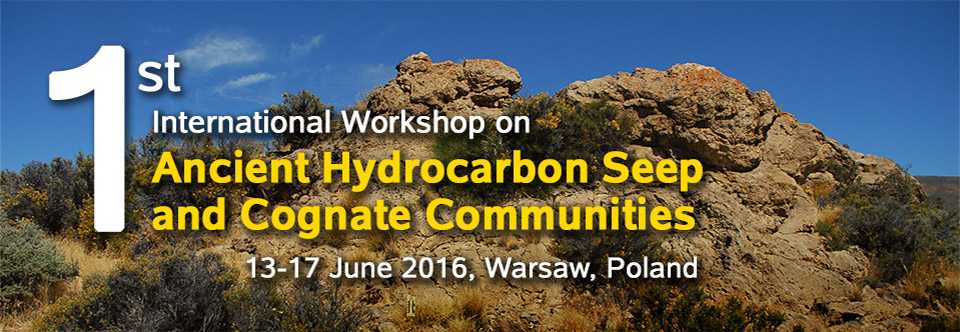
CURRENT STATE OF TAXONOMIC STUDY INTO MIOCENE NEW ZEALAND HYDROCARBON SEEPS
Kristian P. SAETHER1, Crispin T.S. LITTLE2, and Kathleen A. CAMPBELL3
1Key State Laboratory of Stratigraphy and Palaeobiology, Nanjing Institute of Geology and Palaeontology, Chine se Academy of Sciences, 39 Beijing East Road, Nanjing 210008, China; 2School of Earth and Environment, University of Leeds, Woodhouse Lane, Leeds LS2 9JT, UK; 3Earth Sciences School of Environment University of Auckland, Private Bag 92019, Auckland 1142, New Zealand.
Corresponding author: kris.saether@nigpas.ac.cn
A diverse fossil fauna is overviewed from 13 fossiliferous Miocene hydrocarbon seep deposits,
which occur as isolated limestone outcrops within voluminous siliclastic mudstones of the Hawke’s
Bay region in the East Coast Basin, North Island, New Zealand. The fauna is dominated by molluscs
but also includes taxa from at least five other phyla. Among the molluscs, seven new species
(two gastropods and five bivalves), and a new genus have already been formally introduced from
the specimen collections used in this study. Several more new taxa (ca. six new species and at
least one new genus) also are earmarked for future work, as well as emended descriptions and
new records of known species. Most known New Zealand fossil seep deposits are strongly bioturbated,
and the shells contained within them are commonly bioeroded. The trace fossil content
also is evaluated, adding to a relative paucity of such work on fossil hydrocarbon seep deposits.
Comparison of the New Zealand Miocene seep fossil fauna with temporally (Miocene-age) and
spatially (circum-Pacific) analogous fossil seep faunas has allowed initial palaeobiogeographical
evaluation of New Zealand fossil seeps. It was found that, when analogous localities were grouped
a priori into geographical regions and provinces, there was a greater correlation between their taxonomic
similarity to the New Zealand fossil seep fauna and the age of the deposits, rather than to
their geographical location. Hydrocarbon seeps, especially those occurring bathyally and deeper
(the most common setting for their occurrences today and in the past), are widely considered as refugia.
However, our palaeobiogeographical analysis supports the hypothesis that seep faunas, and
faunas in similar environments (e.g., hydrothermal vents), have been subject to constant change
since they first began to colonize and adapt to life in these habitats.
